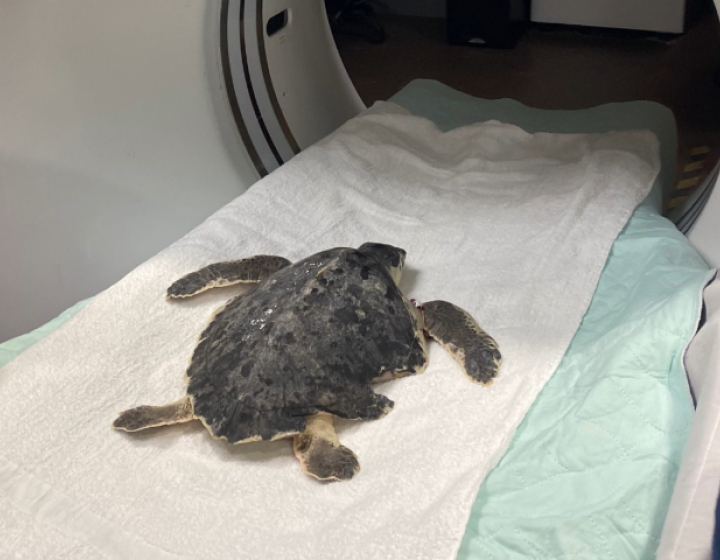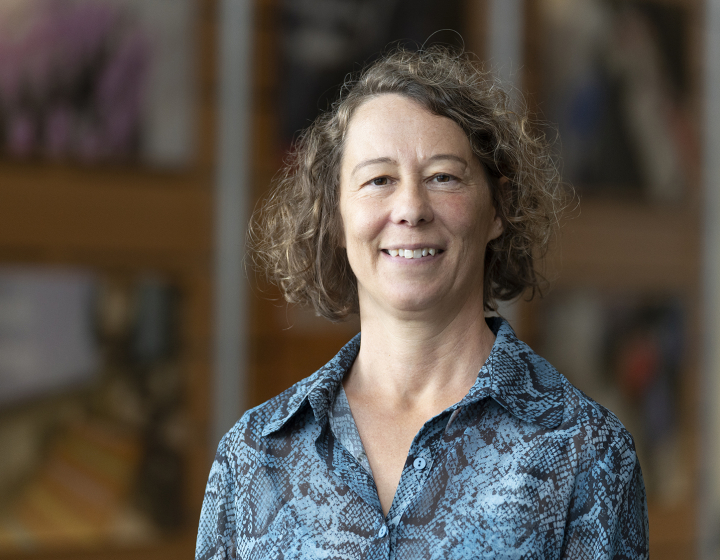Virtual veterinary school: CVM faculty and staff pivot to educating online
When the announcement came in early March that Cornell would be halting all in-person classes due to the COVID-19 pandemic, many teams at the Cornell University College of Veterinary Medicine (CVM) paused operations.
Not so for the folks in charge of delivering educational content at CVM.
Faculty now had to change their entire teaching format. This required the expert help of Educational Support Services (ESS), which produces and facilitates educational experiences at the college. “We went from having no online D.V.M. courses at all at the college, to having all of them online,” says Andrea Beukema, instructional designer. Before the shutdown, the ESS team had planned to transition and augment the DVM curriculum with Canvas, an online platform, over the course of four years. “Then suddenly we had to make that four-year plan happen over three weeks,” she says. Fortunately, the team was prepared. The group, comprised of 12 members with expertise in areas such as educational software development, instructional design and data analysis, had spent the last three years developing technology-enhanced learning resources that made the switch-over smoother.
The team helped faculty create 14 new courses in the span of two weeks, crafting educational materials from scratch. “The first three weeks were just rapid fire, finding out what we had to do and troubleshooting when it didn’t work. We were all working at least 12-hour days,” says Beukema.
Instructors get creative
The constraints of online instruction have led to inventive solutions in some cases. Dr. Erin Epperly, assistant clinical professor in diagnostic imaging, translated her ultrasound class to online using a livestream feed off the ultrasound machine through Zoom. Clinical faculty have developed virtual case rounds sessions to help students who now cannot be in clinics. Dr. Teresa Southard, associate clinical professor and section chief of anatomic pathology, used photos of a and video clips of a goat necropsy along with a series of “solve this mystery” videos for students to follow.
Dr. Kelly Lyboldt, lecturer in physiology, teaches the course Function and Dysfunction, which now operates through several online platforms, including Zoom for discussion, Zoom whiteboard and Google Docs for sharing notes and sketches, and Lucidchart for building flowcharts in real time.
“I had minimal exposure to Zoom, Panopto or Canvas prior to the switch to online courses,” says Southard. “I think for many of us, this experience has expanded our teaching repertoire, and we have learned new skills and strategies we will continue to use when the students return to campus.”
Epperly agrees that her skills have been expanded. “The biggest challenges for me were the short timeline to course development, loss of hands-on labs and implementing technology,” she says. “While I believe we pulled it off successfully, I have learned a lot! Having a really clear syllabus and making sure students are familiar with the technology are critical to future implementation. Especially during this time, anything unclear only adds to students’ anxiety unnecessarily.”
Student perspective
Students have appreciated the creativity and effort from ESS and CVM faculty. “The overwhelming feeling I get in conversations with my classmates is how impressed everyone has been with the faculty and administration,” says Xanth El-Sayed, D.V.M. ’22. “I know that, for myself, I wouldn’t be able participate in coursework right now without help from the administration. I know that people in my program are feeling very appreciative of that during a time when there is a lot of uncertainty going on at every level.”
Anita Yau, D.V.M. ’21, echoed that sentiment. “It’s been really clear to me that faculty and the administration have gone above and beyond what I expected, not only in terms of adapting their materials for online classes but also their amount of support and flexibility has been outstanding,” says Yau. “That sense of community has been really strong.”
A common goal
The switch to online learning also comes with bittersweet elements. “I spent a career helping to build beautiful lecture halls and ensuring our faculty have wonderful tools in the classroom at their disposal, and all of a sudden we have no classrooms, no lecture halls and everyone is working from home,” says Dave Frank, instructional technologist. With the COVID-19 shutdown, Frank’s work suddenly shifted to assisting faculty with Zoom, recording their lectures, helping them creating clinical-type experiences for students online and ensuring continuing education events, such as lectures and trainings, can be translated to the web.
For Beukema, the rush to online instruction brought some benefits. With a graduate certificate in online learning, and a past life as a theater stage manager, she found the quick transition to be an exciting challenge. Also, all faculty were eager to get on board with the new technology. “I’ve never gotten emails back from faculty as quickly as I did that night Cornell announced its plans to shut down the campus,” Beukema says. “I got a one-hundred-percent response rate.”
For Frank, who says he faced a steep learning curve himself in getting accustomed to online learning tools, he’s appreciated the solidarity and support he’s seen across the college and the university. “I’m part of an AV special interest group here at the university, and we’ve been able to hold working sessions with each other across campus to get up to speed on best practices,” says Frank. “It’s just been really nice to see how everyone is working together towards this common goal.”
By Lauren Cahoon Roberts





